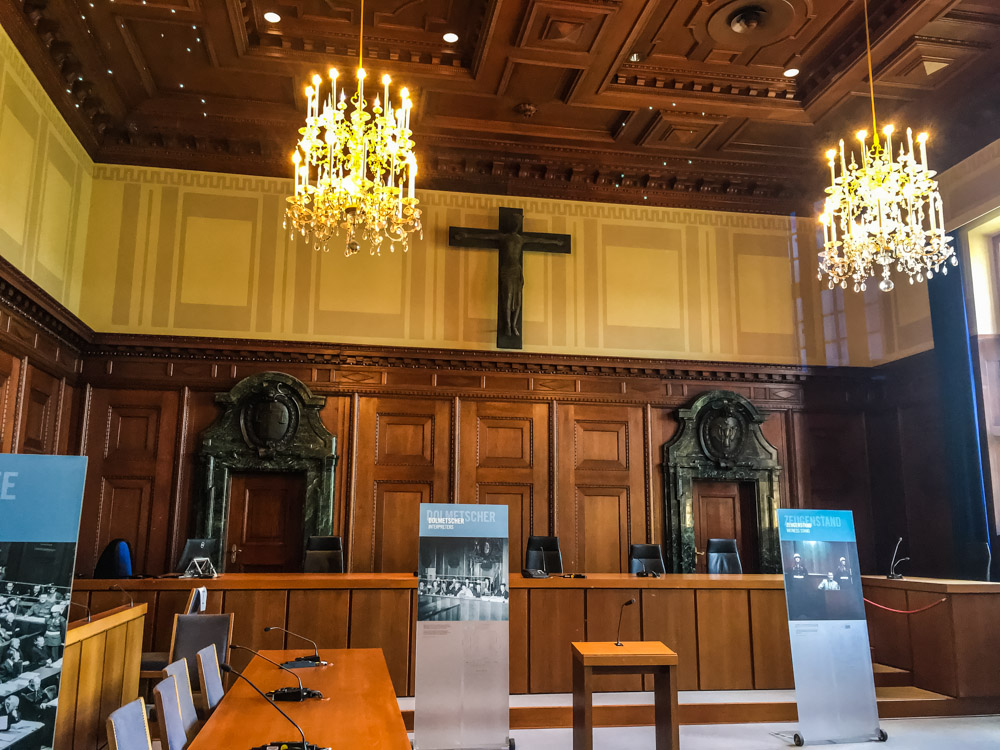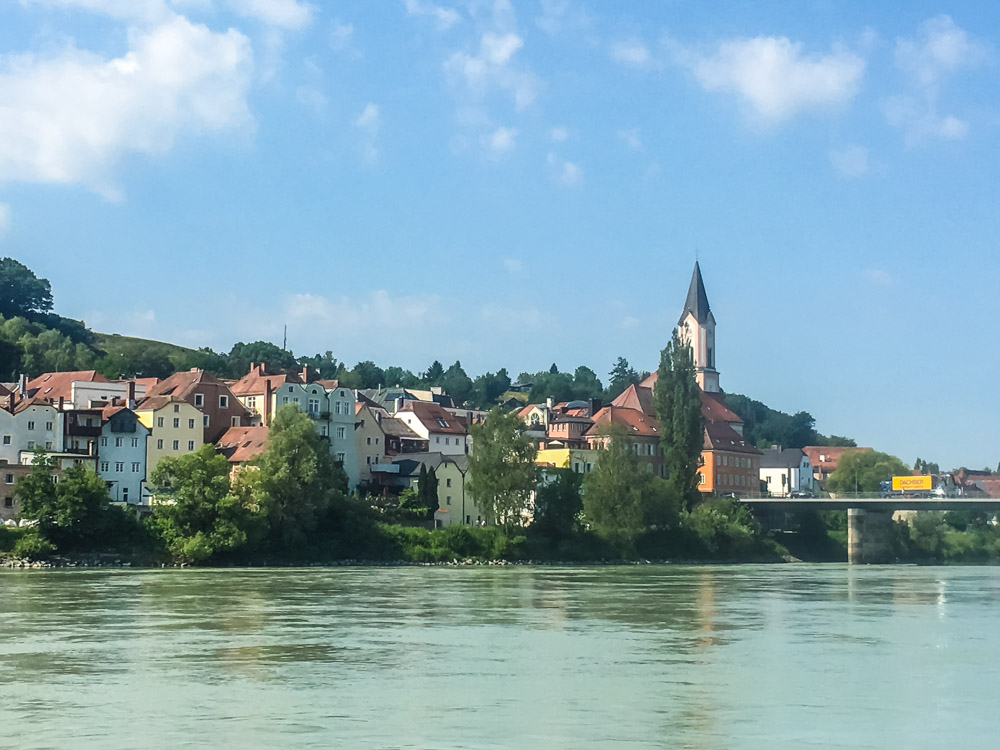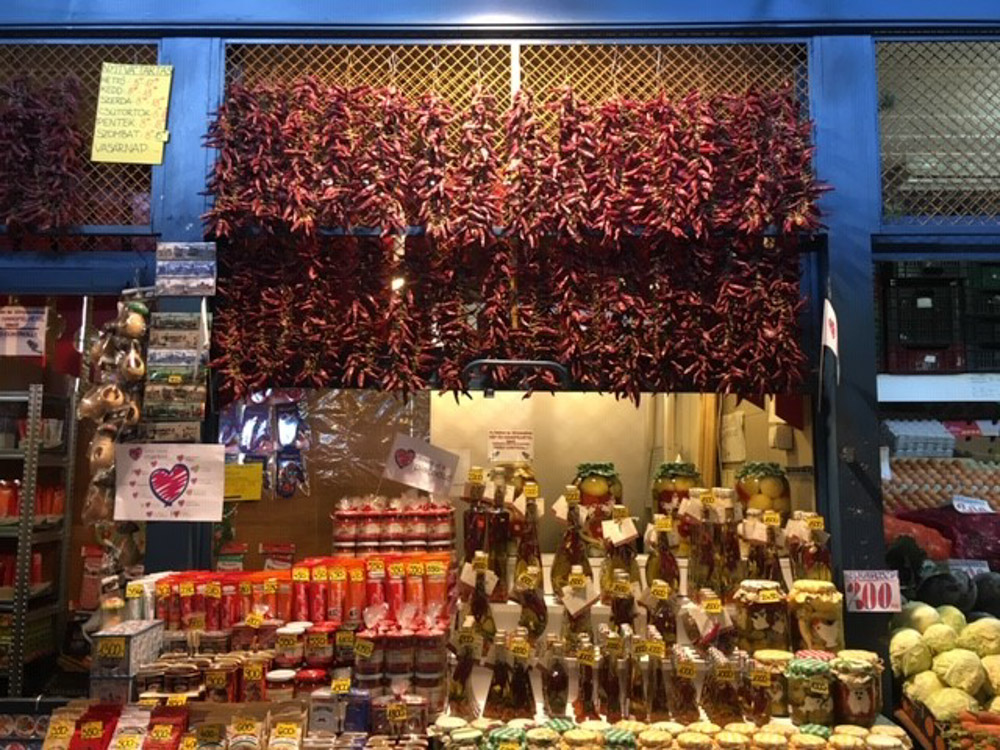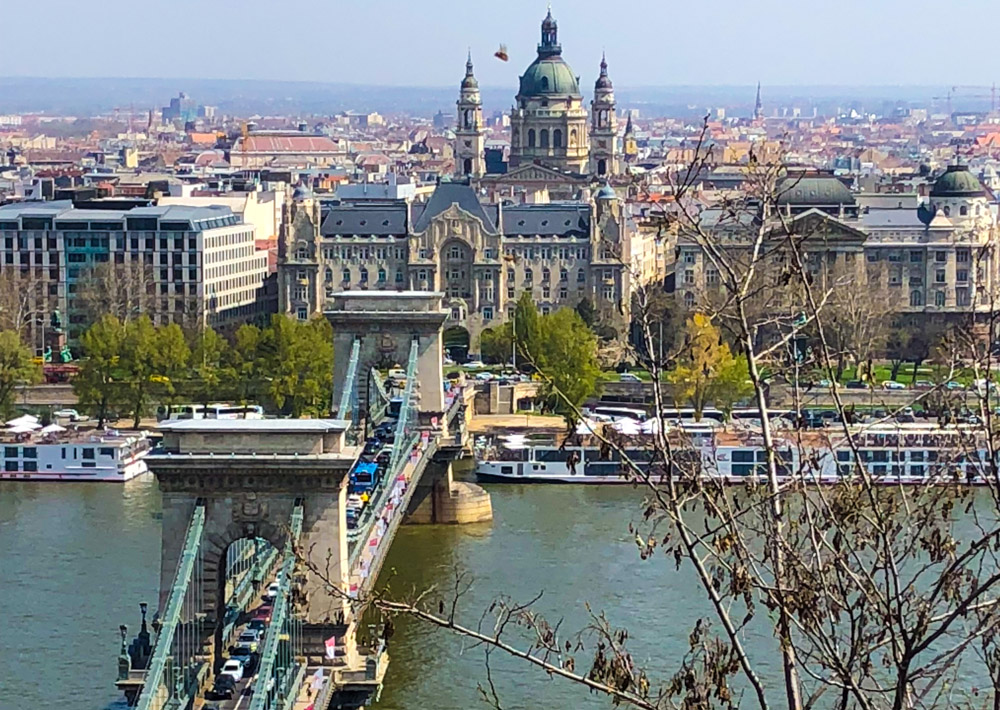By Saul Schwartz
Imagine yourself sitting on a cruise ship, glass of wine in one hand and your hubby’s in the other. Watching the scenery go by in a serene, tranquil fashion. Waking up to new adventures and explorations in yet another wonderful place.
Going on a cruise is not a necessarily a Caribbean endeavor. The Danube river runs through some of the most exciting regions of Europe, and a river cruise will take you to medieval German cities such as Nuremberg and Regensburg, past noble Vienna in Austria to majestic Budapest in Hungary. Three countries in one week and enough impressions to last a lifetime. Get ready for a Cruise of Culture!

To celebrate my wife’s retirement, we traveled to Central and Eastern Europe on a wonderful river cruise. Neither of us had ever been on a cruise before this excursion. Our cruise took us through three countries – Germany, Austria and Hungary.
The food and wines were exceptional, often including local wines and food of the region that we were passing through. Since we do not eat red meat or pork, the chef gave us special attention, offering a different fish every night! In addition, we really enjoyed meeting other couples and socializing with them over the week. The real highlights for us were the new experiences we had on the very educational tours in each port.
Day 1 – Nuremberg, Germany
Nuremberg is the dramatic stage on which the Third Reich rose and fell. It has a current population of just over 500,000 and is located in the state of Bavaria on the main Danube canal. In the morning, our World War II history tour focused on the rise and fall of the Nazi regime.
Nuremberg is remembered as both the seat of Nazi propaganda and the place of punishment for Nazi war criminals. One memorable moment took place when our local guide explained how his grandfather was too ashamed to ever speak about his role in the Nazi movement, except to admit that he was truly ashamed. The tour operator took us by bus to the ruins of Zeppelin Field, the former parade rally grounds where 100.000 voices saluted Adolf Hitler. These grounds cover approximately 11 square kilometres and contain a massive grandstand.
Six Nazi party rallies took place on these grounds and each rally had a theme, like Congress of Victory. The rallies essentially were staged multiple day propaganda shows. We were a little surprised to learn that the field is now used for sports and music festivals. At the Documentation Centre, you have ample chance to contemplate the extent of Nazi propaganda. The Centre is a museum opened in 2001 and built within Hitler’s Congress Hall.
Congress Hall was built in the massive scale of the Roman Coliseum. Although never finished (e.g., the roof was never built), the horseshoe shaped building was designed to hold over 50.000 spectators. Using English language audio guides, we walked through the Centre’s permanent exhibit “fascination and terror” for one hour. The exhibit contains rooms of photos and movies, in chronological order, focusing on the causes and consequences of the Nazi movement.
Nuremberg War Trials
Saal 600, or Courtroom 600, lies within the Justizpalast, the Palace of Justice, the venue of the Nazi war trials that captured the world’s attention from 1945 to 1949. Since 2000 has Saal 600 been open to the public for viewing when court is not in session. Photos within Saal 600 show where the parties and the judges sat during the trials. Our tour guide explained the key aspects of the trials. The International Military Tribunal consisted of judges and prosecutors from the United States, the Soviet Union, Great Britain and France. During several sets of trials, the world learned about the gory details of Nazi atrocities within their concentration camps. The first set of trials involved 24 major Nazi war criminals (including party officials, military officials and high-ranking industrialists and professionals).
All but three were found guilty.
That afternoon we began our cruise on the Danube, Europe’s second longest river (at 1.785 miles / 2.872 km).
Shortly after our return to the ship, we traveled travel through the first of a series of the sixteen locks on the Danube which we went through on the way to Budapest, Hungary.
- Nuremberg official tourism Website
- Documentation Center Nazi Party Rally Grounds
- Memorium Nuremberg Trials Court 600
Day 2 – Regensburg, Germany
In the morning we went on a walking tour of this truly beautiful medieval city in Southeast Germany, with a current population around 140.000. The city centre escaped damage and was largely untouched by World War II bombing by the Allies.
Rich in architectural splendor, Regensburg is the oldest city on the Danube and one of Europe’s best preserved medieval towns. With a very picturesque cityscape, the city is a UNESCO World Heritage Site. Crossing into the town on the 12th century Old Stone Bridge, with its 16 arches over the Danube, we strolled down narrow streets and through open squares, by 13th and 14th century church spires, towers and patrician houses.

We visited St. Peter’s Cathedral, a prime example of high-gothic architecture in Bavaria. Although this church has existed since about 700 AD, it was destroyed in several devastating fires. The current building was completed in 1320. With its twin towers, you can see the cathedral anywhere in the old town area. The exterior features many intricate statues with biblical themes. The interior seats 6.000 and is covered with sculpted imagery and spectacular stained glass windows dating from the 14th century and features a large organ.
We sat and ate Bavarian pretzels and had drinks, as we people-watched from a café facing the cathedral. To our surprise, our tour included
Regensburg’s Jewish history and heritage
Regensburg was the oldest Jewish settlement in Bavaria, dating back to the 10th century, with a gated Jewish quarter. Unfortunately, this Jewish community suffered from various persecutions over the centuries (including special taxes, expulsions and the demolition of the synagogue and cemetery in 1519). For example, the exterior of St. Peter’s Cathedral includes a statue of Jews suckling on a large sow, an insulting image placed on the south side facing the old Jewish Quarter. Even today you can see Jewish gravestones placed onto buildings as a warning for Jews to keep away.
Today a modern holocaust memorial, the Neupfarrplatz Synagogue Memorial, sits on one of the town’s main open squares, on the site of the former synagogue, that was destroyed in the 16th century.
With a plaque, Regensburg also honours the house where Oskar Schindler lived for a short period (1945-1946) after World War II. The German industrialist saved the lives of over 1000 Jews during World War II through employment in his factories.
In the afternoon, we strolled through Regensburg on our own. Had this not been a stop on our river cruise, I am sure we would have never made our way to this scenic city.
Day 3 – Passau, Germany
The last major German city on the Danube border with Austria is Passau, a beautiful and historic city of approximately 50.000 residents. The old town is a jumble of narrow cobbled lanes, underpasses and archways. The old town has a definite Italian presence with its colorful houses and the feel of a medieval Mediterranean peninsula.
On our morning tour, we learned that Passau was an important centre for the salt trade. We strolled on winding little streets and alleyways, by soaring towers and through open squares, by colourful traditional patrician houses and clock towers. Like Pittsburgh, Pennsylvania, this is a town at the confluence of three rivers (the Inn, the Ilz and the Danube).
At the point, we could see the difference in color between the rivers. The Danube is blue, the Inn is green and the Ilz is black. In various locations, we saw high water scales that showed how the Danube periodically flooded Passau, with one of the worst floods taking place in 2013.
Concert in St. Stephen’s Cathedral
Our highlight was attending an organ concert within the impressive Italian baroque St. Stephen’s Cathedral where we able to see and hear Europe’s largest pipe organ, with more than 17.000 pipes. The church stands at the highest point of the old town. The ornate interior contains magnificent frescoes and stucco works. The short concert was an unforgettable acoustical delight.
In the afternoon, we toured Passau by bicycle. We cycled by the large campus of the University of Passau and headed in the direction of Vienna on paved paths with river or forest views. At the bike rental shop (called Rent-A-Bike Passau), we were provided a map which showed a series of bike paths to choose from. If it was not for river cruise, then we would have never seen Passau!
Day 4 – Krems to Vienna, Austria
This morning we woke up in Austria. Before we docked at Krems, we walked on the Cruise ship’s walking track. As we circled the track on this lovely stretch of the Danube, we observed the rolling hills of the Wachau Valley, another UNESCO World Heritage Site. We sailed under bridges and through a lovely tapestry of vineyards, forested slopes and castle ruins.
We briefly passed through the well-preserved port town of Krems on the way to the highlight of the day: our exclusive tour of the imposing Gottweig Abbey. The large complex of buildings, that make up the revered Abbey, sit on a hilltop, overlooking the Wachau Valley. This baroque Benedictine monastery was dedicated in the 11th century and then rebuilt in the 18th century after a series of fires. We thought the interior highlight to be the large three-story imperial staircase with sculptures along the walls and railings, arriving at the top to view a large and splendid ceiling fresco with religious motifs.
The Abbey’s imperial apartments contain an impressive collection of Austrian art and engravings. We spent some time within the beautiful church sanctuary, with its colourful stained glass windows, paintings and organ. Gottweig Abbey is more than a retreat for the 40 to 50 monks who reside there. We learned that this order not only worships, reads, studies and writes. They also do outreach and work in the nearby communities, including parishes, schools and hospitals. In addition, the monks work in the vineyards.
The Abbey is known for its tasty apricot sparkling wine, juices and jams.
We spent some time in the Abbey’s café after our tour; the café overlooks the beautiful valley below. Although the Abbey is peaceful now, we learned that it was taken over by the Nazis in World War II. Fortunately, much of the artwork was preserved.
Spellbound by Vienna
We then boarded the cruise ship and traveled on to Vienna, the capital of Austria.
In the afternoon, we enjoyed a cup of traditional Austrian tea, as we listed to a talk on the development of the elegant coffee houses of imperial Vienna and the music of Mozart. For more than 300 years, people have flocked to Vienna cafés to relax with coffee and a pastry.
In the evening we sat spellbound listening to a wonderful Mozart and Strauss concert set in a Viennese palace along the famed Ringstrasse, the road on the site of the former city walls. The acoustics in the concert hall were magnificent as we were serenaded by dramatic classical music pieces from the beloved Vienna Residence Orchestra. This small orchestra was founded in 1989 and they were joined on the stage by with several soloists and ballet dancers dressed in period costumes. Sitting in this high style venue, we quickly lost ourselves in lilting airs of Mozart and Strauss’ most beloved music and evocative melodies.
We then returned to the cruise ship after a scenic drive through an illuminated Vienna.
Day 5 – A Taste of Vienna
We started our day with a panoramic tour of Austria’s capital. We traveled by bus along the Ringstrasse, marveling at the elegant architecture. We walked through the Hofburg Imperial Palace, the winter residence of the Hapsburgs, which exterior contains impressive statues, courtyards and the palace stables.
Keeping with tradition, we stopped at a Vienna coffee house to have a complete sensory experience! We stopped for pastries at Demel and ate rich, chocolate tarts. We ended our morning tour at the towering St. Stephan’s Cathedral, where we saw where the Hapsburgs are entombed in the Imperial Crypt.
In the afternoon, we took a special excursion to Schonbrunn Palace, another UNESCO World Heritage Site. Originally a hunting lodge, the royal summer residence was built in the 17th century. It was later enlarged by Maria Theresa, the last Austrian Hapsburg. It then became a palatial imperial residence.
The palace features large courtyards with statues and fountains and a baroque exterior. Outside the palace, we walked through a series of magnificent gardens with colourful plants and statues of mythical figures. The gardens reminded us of those at Versailles, near Paris. The park-like gardens extend more than one kilometer in each direction. The interior of the palace contains over 1400 rooms, including state rooms and private apartments occupied by the royals, and a hall of mirrors similar to Versailles.
With only about 24 hours in Vienna before we embarked to Hungary, we agreed that we would have to come back to see more. We could not capture enough of this city of 1.8 million during our brief stay.
Day 6 – Budapest, Hungary
Once separate cities, Buda and Pest were united to form Hungary’s capital in the 19th century. We began our morning with a run along the pedestrian street a short distance from where we were docked on the Pest side of the river. In addition, we mingled with residents and spent some time at the Great Market Hall, which is a large farmer’s market, which featured local items such as paprika, produce and wares.
Our city tour included both the Buda and Pest sides of the Danube. From the hilly Buda side, we enjoyed brilliant views of the Danube and Pest from the massive Castle District complex. We walked across the Chain Bridge which was temporarily closed to traffic for a festival. One group of athletic residents was doing yoga right on the bridge.
In the afternoon, we toured Jewish Budapest, including the massive Donany Synagogue. Our tour guide, who was Jewish, shared information on the cherished history and heritage of the former Jewish Quarter or Ghetto. Within the city centre, the Quarter is now known as District VII and at night comes alive with a thriving bar scene, with hip restaurants and retailers. Our guide explained that the Jewish community is now dispersed throughout various neighborhoods of Budapest.
A century ago, Budapest had a thriving Jewish community. Then in the years leading up to and including World War II, half of the city’s 250.000 Jewish were killed. During the war, the houses of Jewish residents were dotted with yellow stars.
The 19th century Moorish-Revival Donany Street Synagogue is the largest in Europe and second largest in the world. Sadly, during the war, it was converted to a stable. Today its glittering interior has been restored. We also spent time in the Jewish Museum and Holocaust Memorial Centre preserving Jewish history. Within the courtyard of the synagogue, we viewed the Tree of Life, a weeping willow made of steel into a memorial to the 500.000 Hungarian Jews killed by the Nazis. Names of victims are placed on the 30.000 leaves. Also within another courtyard there is a garden with plaques for those killed in the Jewish ghetto during 1944-1945.
On a more pleasant note, we stopped for a drink and a pastry at a laid back café within District VII. Still on the Pest side, we walked by the 60 iron shoes of the Shoes on the Danube, a riverside memorial to Jews forced to remove their shoes before they were shot by the Nazis and thrown into the river.
In the evening, our cruise ship did a wonderful excursion on the Danube, so that we could see the beautiful buildings at night. With only 24 hours in Budapest, we decided to explore more in the future.
About Saul Schwartz
Saul lives in Alexandria, Virginia and has lived in the Washington, D.C. area since 1984. He loves to travel throughout Europe with his wife and family and particularly enjoys interacting with local residents and learning about life in their city and country.
He has visited Berlin for one week, cruised on the Romantic Danube, wrote a 1-week city guide for London, roamed the ancient architecture of Rome and much more! Check out all Saul’s contributions.
More info
To discover the beauty of Budapest, take a tour of the city through the lens of photographer Fabiolla Loureiro and her captivating Black and White photographs in Budapest at a glance. Or perhaps you want to know why Sziget Festival is one of the Top5 Festivals in Europe? If you want to go a river cruise just like Saul and his wife, go on the Romantic Danube cruise with Viking River Cruise.
Learn more


